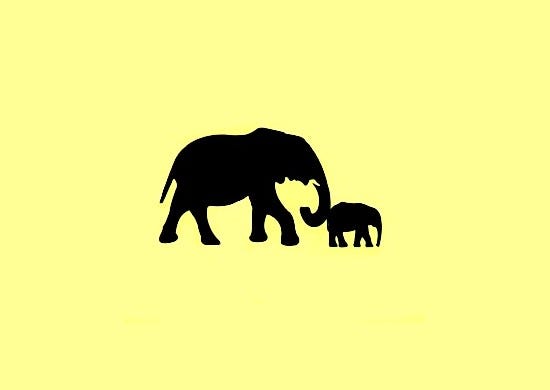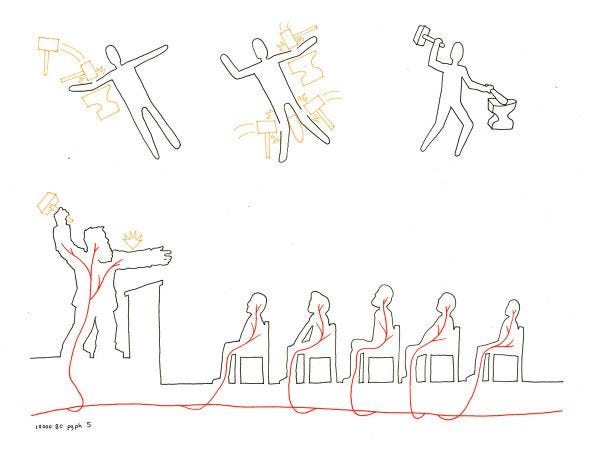Introducing a Deleuzoguattarian philosophy in the classroom through a series of becomings-

In A Thousand Plateaus by Gilles Deleuze and Félix Guattari, the concept of “becoming-animal” emerges as a philosophical approach to dismantle existing hierarchies, both materially and epistemically. Rather than advocating for the imitation of animals, Deleuze and Guattari emphasize the idea that animals exemplify and unbridled desire. Unlike humans, where desire is found to consistently repress itself, the rest of the animal kingdom appears to operate without such constraints. However, it must be noted that Deleuze and Guattari do not conceptualize the human Platonistically. There is a difficulty in isolating human nature because the nature of what it means to be human is constantly changing. Thus, we are in a state of becoming — always in the state of finding our animality, but never lacking it.
We ought to draw from Baruch Spinoza’s Ethics to explain this point clearer. Although heavily simplified, humans are part of nature, and attempts to divorce humans from nature fail to acknowledge that human are part and parcel with nature, as nature.
At any rate, every educator understands this notion of animality — especially those teaching elementary school students. Within elementary classrooms, the children are malleable in their knowledge production; they are becoming-animal. Children scream at the playground, make weird noises with their mouths, move their bodies in various arrangements outside of typified structures, so on and so forth. Many students are unapologetically themselves, embracing their weirdness.
Yet, something happens — something changes. Do we end up eating from the tree of knowledge of Good and Evil? Whatever it may be, there comes a time where individuals find themselves to be separate from the pack: a spotlight upon themselves where everyone can see one’s each and every movement. The fabulous book, Nudge, written by Richard Thaler and Cass Sunstein, explains the Spotlight Effect in great detail:
One reason why people expend so much effort conforming to social norms and fashions is that they think that others are closely paying attention to what they are doing. (Nudge, 60)
The Spotlight Effect is responsible for social pressure and anxiety. In Nudge, the authors explain a qualitative study that exposed the Spotlight Effect for what it is. A student was given a t-shirt to wear with Barry Manilow on the front of the shirt. Afterwards, this student was guided to a room full of other students for the purpose of conversing. After conversing, the students parted ways and the experimenters asked the students who weren’t wearing the shirt what individual was on the t-shirt of the student wearing the Barry Manilow t-shirt. The results were shocking:
Only 21 percent of the group could say who was pictured on his T-shirt. (Nudge, 61)

The moral of this story is that if Barry Manilow cannot be recognized — neither can you. Kidding. But the real moral of the story is that people do not watch you as much as you think they do. In the classroom, there is a common fear that exists among students: the fear of failure. Raising one’s hand and asking a ‘dumb’ question or giving a ‘wrong’ answer is of concern for many students. An evident result of this includes students not asking questions (and failing to answer them), lower test scores, and decreased class participation. The question now becomes: how can educators utilize the Spotlight Effect to encourage students to participate?
Math educator, Brian McLogan, created a Youtube video that explained how teachers are partly responsible for making students feel like they are in the spotlight. At times, it is easy to forget that educators are in such a powerful position — we might not even be mad or frustrated but can come off that way in lieu of an incorrect answer.

So … how should educators utilize the Spotlight Effect effectively? The answer lies in attempting to make the Spotlight Effect known. I have always enjoyed when teachers have said: “Don’t be afraid to raise your hand — someone in this classroom has the same question you do.” In this light (no pun intended), educators must not be hyper-critical of incorrect answers. Instead, educators need to be nudge students in the right direction. Animals make mistakes all the time — and that’s what we are. Animals.
Nudging — whether it be the with Spotlight Effect or another modality — is essential to challenge dominant hierarchies in the classroom.

Leave a Reply